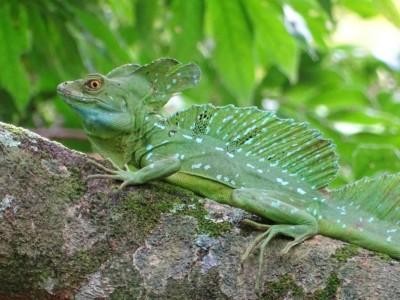August 26, 2024
Taking Finnfund’s biodiversity work to the next level

Anne Valto in Bhutan.
This spring and summer, bees were again very few in my garden, and alarming news about declining species populations, 69% on average (WWF Living Planet), made it to the headlines. Everywhere I’ve been to, I see signs of human influence and habitat conversion.
On the positive side, some success stories have been reported too, such as the increasing arctic fox population in Lapland , and the tiger population increase in India, both demonstrating that if there’s a will, perseverance, and resources, endangered species populations can also be revived.
Biodiversity aspects becoming mainstreamed
In less than two months global leaders are gathering in Cali, Colombia, for COP 16 to discuss and advance targets and objectives of the Global Biodiversity Framework (GBF). One of the key topics in discussion will be financing for the implementation.
Global geopolitical turbulence and tensions and the great year of elections have drawn a great share of the wider public’s attention leaving less room in the media for biodiversity and COP 16, but in the impact investing ‘bubble’ the topic has become increasingly mainstreamed, and there is a growing interest to build portfolios and investment strategies that take into consideration nature and biodiversity both from risk and opportunity perspectives.
Taking the next step
Since COP 15 in 2023 and the signing of the Kunming-Montreal Global Biodiversity Framework (GBF) we have been working hard in Finnfund to contribute to the global biodiversity targets. The Nature and Biodiversity Statement now being launched has been prepared to demonstrate Finnfund’s commitment to fight against biodiversity loss. The statement brings together the guiding principles and goals based on which Finnfund strives to protect and strengthen the well-being and diversity of nature and to mitigate possible nature and biodiversity risks in its investment activities.
The Statement is a high-level document and to deliver commitments made, we need and have been preparing our tools to support our daily work.
We need clear targets and systematic tools

Basiliscus Plumifrons in Nicaragua. Photo: MLR Forestal
In Finnfund, biodiversity risks have been a part of environmental and social risk assessment for years. In the last couple of years, we have been building our own and our investee capacities and skills to better integrate biodiversity management into environmental management systems and processes. What’s been missing is a systematic way to aggregate and report biodiversity impacts in our portfolio, and particularly identify, monitor, and report positive biodiversity impacts created.
Finnfund key priority sectors include forestry, agriculture, and renewable energy, all of which are both highly dependent on natural resources and biodiversity and also have potentially significant impacts on them. In 2023 we rolled up our sleeves and started working to review, revise, and further develop our biodiversity approach recognizing that our understanding of biodiversity impacts was incomplete and scattered to project-level documents. Even though frameworks such as TNFD were under development at the time, we quickly learned that existing and emerging frameworks to support were not that many.
If it is not broken, don’t fix it
We did not start our work from scratch though and after reviewing relevant frameworks we started building our approach on what we already had in place, the IFC Performance Standards. The new framework has been built to meet TNFD requirements thus it assesses negative and positive impacts against the IPBES five drivers of biodiversity loss.
New indicators flow from the investee level to the portfolio level and from the early stages of the investment process to implementation and monitoring. As part of the latest annual monitoring data collection, we tested the indicators for the first time in full. Analysis is still a work in progress thus how successfully the data is now flowing into our system is yet to be seen. We are not expecting wonders to happen overnight so companies will build their reporting capacities gradually and data quality is expected to improve gradually. Revision of our processes and tools and integration of biodiversity into them has been a heavy exercise but we are getting there!
In progress: Planetary Boundaries Investing Framework
As Finnfund we are now better equipped to assess, manage, and report biodiversity impacts of our investments but the journey has only begun. Biodiversity is a complex issue and learning and development work continues. We are also working on a new Planetary Boundaries Investing Framework, which will be used for assessing and monitoring investments’ potential for generating positive planetary effects and for controlling negative outcomes.
But it’s not only about our professional work that matters: I think I will also start replacing my lawn with a meadow and hope to see more butterflies, bugs, and bees in my yard in the coming years. Most importantly, I must become a more and more conscious consumer and keep on demanding more from our policymakers.
Anne Arvola
Senior Development Impact Adviser, Finnfund
Read more:
New policy statement guides Finnfund’s investment activities in strengthening natural values and biodiversity – Finnfund
Biodiversity – Finnfund
We got a deal from Montreal COP15 – then what? – Finnfund
